Estádio Jornalista Mário Filho (Maracanã)
| Capacity | 73 609 |
|---|---|
| Country | Brazil |
| City | Rio de Janeiro |
| Clubs | CR Flamengo, Botafogo FR, Fluminense FC, CR Vasco da Gama |
| Inauguration | 16/06/1950 |
| Construction | 02/08/1948 – 1965 |
| Renovations | 1999–2000, 2005–2007, 2010–2013 |
| Cost | R$ 1.14 billion (2010–2013) |
| Record attendance | 199 854 (Brazil – Uruguay 1–2, 16/06/1950) |
| Design | Waldir Ramos, Raphael Galvão, Miguel Feldman, Oscar Valdetaro, Pedro Paulo B. Bastos, Orlando Azevedo, Antônio Dias Carneiro (1948), Fernandes Arquitectos Associados (2010) |
| Address | Avenida Maracanã, Rio de Janeiro (RJ) – CEP 20.271-110 |
Advertisement
Maracanã – stadium description
After announcement that Brazil will host 1950 World Cup, state authorities of Rio de Janeiro decided to fund a new central stadium for the whole regional. In 1947 tenders were launched and design be seven local architects was chosen, meaning Rio would go for a nearly circular stadium. As for location, site of a horse racing ground in the Maracanã district was selected, not without opposition that surrounded plans for the stadium from the beginning.
Construction works started in August 1942, but quickly started to fall behind schedule despite FIFA sending a European expert to help conduct the project. In June 1950, on opening day, the ground was far from ready, lacking basic infrastructure like toilets and with scaffolding in spectator areas. Despite the circumstances first several games have drawn massive crowds, rarely falling below 100,000 people. Largest one was the World Cup final in which Brazil was facing Uruguay in front of 199,854 people. Some say the number was even greater, there is also gossip that when Brazil lost, people were jumping from the high scaffolds, committing suicide. Crowds far over the 150,000 took place throughout the following decade during Brazil's internationals or Rio de Janeiro's Flamengo – Fluminense derbies.
Ironically, the ground was only finished in 1965, meaning the construction process took 17 years and is among the longest in sports architecture. A year after works were done Mário Rodrigues Filho passed away. This journalist was among the most vibrant supporters of the stadium back in 1940's and is seen as the one without whom Maracanã might not have been built. For that reason soon after his death it was announced the stadium will take his name, though to date it is most commonly referred to as just Maracanã.
Over decades an astonishing list of large events took place here, starting with most important football games, both domestic and international. When being selected to host 2014 World Cup final it became one of only two stadia worldwide to host this prestigious game twice. Then came announcement that opening and closing ceremonies of the 2016 Summer Olympics will also happen here, making Maracanã the only stadium for such ceremonies without an athletics track. Apart from these tournaments there were national finals, massive volleyball games, Panamerican ceremonies, papal visits and some of the World's largest concerts with audiences of not much below 200,000 people (Frank Sinatra, Tina Turner, Rolling Stones, The Police and many more).
In 1992 a piece of the upper tier terrace fell down, killing 2 people and wounding over 50. For this reason seats were installed to decrease crowd congestion, first in the upper tier (1990's) and then also in the lower one (2006). Capacity started falling until it ended up with no seat during the 2010-2013 revamp. For the first time large parts of the stadium were dismantled as they proved unstable during renovation led before 2014 World Cup. Most significantly the concrete roof was taken down (to be replaced by membrane) along with some 70% of the stands.
Works caused numerous controversies and opponents emphasized that parts of limited value were preserved – the stadium was listed as national heritage monument for its cultural value, not architectural. Meanwhile, along with revamping authorities also removed indigenous museum from the stadium and decided to privatise it for the first time, inciting protests.
Works were carried out with significant delays and cost $500 million, a lot more than initially planned.
Advertisement
Pictures
-

01.2014 © Copa2014.gov.br 
01.2014 © Copa2014.gov.br 
22.02.2015 © Guertzen 
01.2014 © Copa2014.gov.br 
01.2014 © Copa2014.gov.br 
22.02.2015 © Guertzen 
27.04.2013 © Copa2014.gov.br 
27.04.2013 © Copa2014.gov.br 
21.02.2020 © Vladimir Varfolomeev (cc: by-nc) 
11.05.2014 © Donatas Dabravolskas (cc: by-sa) 
21.02.2020 © Vladimir Varfolomeev (cc: by-nc) 
10.05.2015 © Adam Jones (cc: by-nc) 
20.09.2015 © Pexels.com 
27.04.2013 © Copa2014.gov.br 
27.04.2013 © Copa2014.gov.br 
27.04.2013 © Copa2014.gov.br 
27.04.2013 © Jonas Pereira, EMOP 
27.04.2013 © Jonas Pereira, EMOP 
27.04.2013 © Jonas Pereira, EMOP 
27.04.2013 © Copa2014.gov.br 
27.04.2013 © Copa2014.gov.br 
27.04.2013 © Cris Dissat, Blog Maracana Online 
03.01.2014 © Luciano Silva 
13.11.2018 © Joersch 
07.09.2014 © Sama093 
16.02.2010 © IK´s World Trip (cc: by) 
29.02.2008 © Pedro Lopez (cc: by) 
23.02.2010 © Jose Fernandes Junior (cc: by) 
29.02.2008 © Pedro Lopez (cc: by) 
29.02.2008 © Pedro Lopez (cc: by) 
20.07.2010 © Christian Eric (cc: by) 
20.07.2010 © Christian Eric (cc: by) 
07.2008 © Fernando Stankuns (cc: by-nc-sa) 
07.2008 © Fernando Stankuns (cc: by-nc-sa) 
12.07.2010 © Weiko (cc: by-nc-sa) 
08.11.2006 © -marko (cc: by-nc-nd) 
28.08.2010 © Daniela Martins (cc: by-nd) 
28.07.2007 © Nicholas Bittencourt (cc: by-nd) 
28.05.2009 © Fulvio Tarifa Toniato (cc: by-nd) 
07.2008 © Fernando Stankuns (cc: by-nc-sa) 
07.2008 © Fernando Stankuns (cc: by-nc-sa)
Pre 2010:
Related news
2025
-
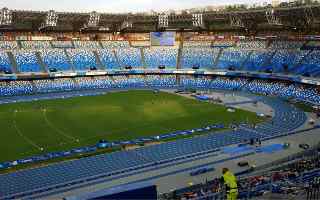
Italy: Naples begins its major chase for Euro 2032
Naples is entering a key phase in the bid to host the 2032 European Championship. The City Council has approved a set of 12 principles that will form the foundation for the redevelopment of Stadio Diego Armando Maradona.
-
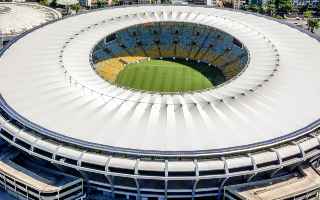
Brazil: Maracanã up for sale!
The legendary Maracanã Stadium has been put up for sale by the government of the state of Rio de Janeiro. The decision comes amid an urgent need to raise funds for the state treasury. Among the assets listed for sale is the iconic stadium that hosts two of Brazil’s most successful clubs — Flamengo and Fluminense.
-

World: Race to host 2029 FIFA Club World Cup begins
Qatar has officially entered the race to host the second edition of the revamped FIFA Club World Cup, joining Spain and Brazil as candidates.
-

Brazil: Contaminated soil halts Flamengo's dreams. Stadium construction delayed?
Flamengo's plans to build a modern stadium in the heart of Rio de Janeiro have encountered a serious obstacle. The need to decontaminate the site of the former Gasômetro industrial plant has forced a delay in the timeline by at least two years.
-
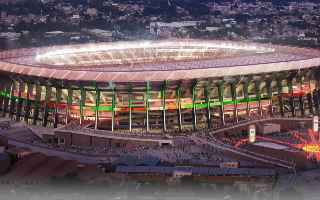
Mexico: New opening date for Estadio Azteca and further redevelopment plans
In 2026, Estadio Azteca will host the FIFA World Cup opener for the third time in history — a feat no other stadium in the world has achieved. To fulfill its role as host, the iconic venue is undergoing its most extensive renovation in decades.
-
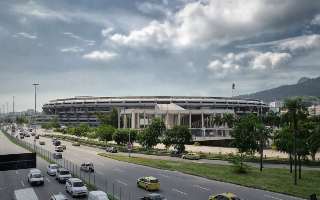
Brazil: Flamengo and Fluminense discover a gold mine at Maracanã
Flamengo and Fluminense have found a new source of income. In addition to building a car park or reorganising the VIP boxes, the Fla-Flu consortium wants to sell the naming rights to the legendary Estádio Jornalista Mário Filho. The price could be the highest in the history of Brazilian football.
2024
-
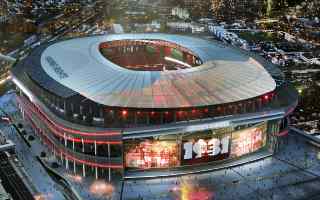
Brazil: First renderings of Flamengo's new stadium. Bigger than Allianz Arena
On November 25, representatives from Flamengo and the city of Rio de Janeiro met at the club’s headquarters in Gávea to sign an agreement that will pave the way for the construction of the red-and-black stadium in the Gasômetro area.
-
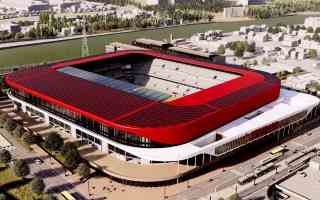
Brazil: Agreement on land acquisition for new Flamengo stadium!
On October 3, Flamengo president Rodolfo Landim, President Lula, and Rio’s mayor Eduardo Paes participated in a video conference formalizing the agreement for acquiring the Gasômetro land to build a new stadium for the club.
-

Brazil: Flamengo to purchase land for new stadium?
On July 9, the city of Rio de Janeiro announced an auction for the sale of the Gasômetro land in the city's port region for the construction of a stadium for the Flamengo team. The minimum bid for the purchase of the land is 138.2 million R$, which is 102 million R$ less than the property's valuation conducted in 2023.
-

Brazil: Maracanã to turn into a ski jumping hill?
Despite ski jumping being practiced in the summer on artificial surfaces, it is predominantly associated with winter. However, it seems that soon this discipline might find its way into countries that have no connection to winter sports climatically. Sandro Pertile, the director of the Ski Jumping World Cup, believes that competitions in ski jumping could soon take place in Brazil.
2022
2021
-

Copa America 2021: Carrying on, against all odds
Empty stadiums, infected players, protests in the streets. Even the playing fields aren’t up to standard. But Copa America is pushing forward, with Brazilians set for glory.
-

Rio de Janeiro: Maracanã renaming vetoed by governor
Acting governor of Rio de Janeiro has vetoed the notion to rename Maracanã after legendary player Pelé. Interestingly, he was asked to do so by the idea’s author himself.
-

Brazil: Maracanã to be renamed after king Pelé
When we think about Brazilian football, Maracanã and Pelé come as the first thoughts for sure. Those two will be closer than ever when the unique stadium will be renamed after a legend.
2020
-

COVID-19 crisis: South America turns stadiums to hospitals
Though the continent hasn't yet seen as many cases as Europe or North America, football clubs are donating their stadiums, first of which are being converted into field hospitals or used for other purposes.
-

Rio de Janeiro: Maracanã capacity again close to 100,000?
Things are looking well for Flamengo. The club wants to take over management of the legendary stadium for 35 years. If that happens, removal of seats could bring capacity to significantly over 90,000 once more.
2019
2018
-

Rio de Janeiro: Football is secondary at Maracana
So far this year over 60% of all visitors at Brazil's most famous football temple came here for concerts, not games. While the proportion should change later into 2018, it's hardly the stadium many hoped it would be.
-

Rio de Janeiro: Flamengo need more time to evaluate stadium site
Deadline for decision passed yesterday, but Brazil's 6-time champions need more time to decide on their potential stadium at Avenida Brasil. Will the 50,000-seater fit there?

 StadiumDB
StadiumDB

